Family: Argidae
Family common name: argid sawflies
Subfamily: Atomacerinae
Genus: Atomacera Say, 1836
Subgenera: none
Argidae are found in all non-polar regions of the world (Smith and Middlekauff 1987Smith and Middlekauff 1987:
Smith DR and Middlekauff WW. 1987. Suborder Symphyta. In: Stehr FW ed. Immature Insects. Kendall/Hunt Publishing Company. Vol. 1: 754 pp., Smith 1992Smith 1992:
Smith DR. 1992. A synopsis of the sawflies (Hymenoptera: Symphyta) of America south of the United States: Argidae. Memoirs of the American Entomological Society 39: 1-201.). They are external foliage feeders with a wide range of host plants. The family exhibits some uncommon behaviors like the excretion of defensive compounds and subsocialsubsocial:
Living in aggregations but lacking organizational structure as in true social insects; can describes insects with tendencies to protect or care for thier young, feed gregariously, and build cocoon masses.
habits (Smith 1992Smith 1992:
Smith DR. 1992. A synopsis of the sawflies (Hymenoptera: Symphyta) of America south of the United States: Argidae. Memoirs of the American Entomological Society 39: 1-201.).
Atomacera are small among the Argidae and usually measure less than 5 mm in length (Smith 1992Smith 1992:
Smith DR. 1992. A synopsis of the sawflies (Hymenoptera: Symphyta) of America south of the United States: Argidae. Memoirs of the American Entomological Society 39: 1-201.). In North America, the adults are mostly black with simple antennaeantenna:
the sensory organ emerging from the front of the head, usually between the compound eyes and above the clypeus; includes the flagellum, scape and pedicel
 and infuscated wings (Lindquist and Trinnell 1965Lindquist and Trinnell 1965:
and infuscated wings (Lindquist and Trinnell 1965Lindquist and Trinnell 1965:
Lindquist OH and Trinnell JR. 1965. The trefoil sawfly, Atomacera debilis Say (Hymenoptera: Argidae), in Ontario. The Canadian Entomologist 97: 181-184.).
There are 34 described species worldwide, restricted to the New WorldNew World:
the Western Hemisphere; the continents of North and South America
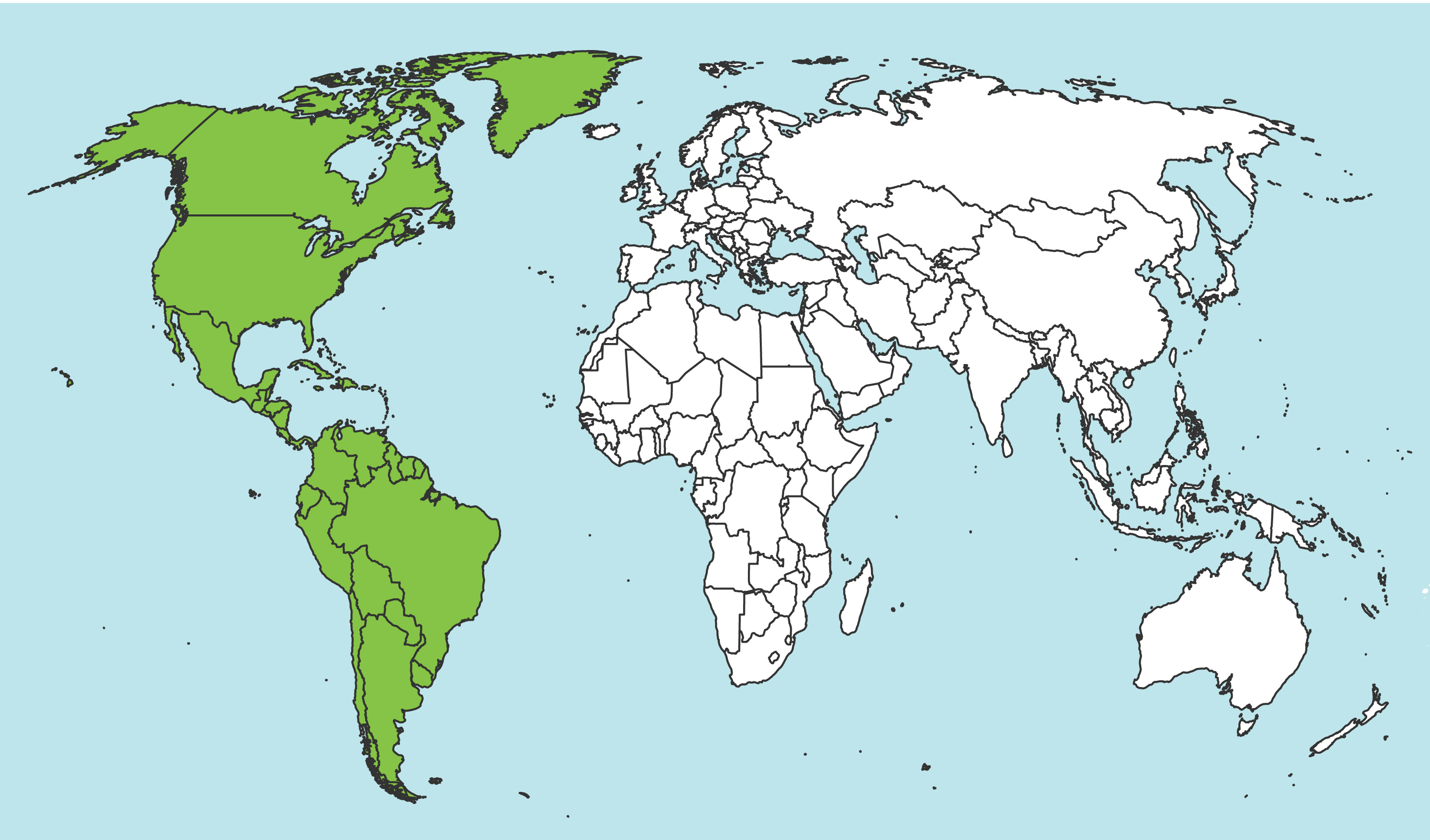 . Thirteen species occur in North America with the highest diversity in the Central American region (Smith 1992Smith 1992:
. Thirteen species occur in North America with the highest diversity in the Central American region (Smith 1992Smith 1992:
Smith DR. 1992. A synopsis of the sawflies (Hymenoptera: Symphyta) of America south of the United States: Argidae. Memoirs of the American Entomological Society 39: 1-201., Taeger et al. 2010Taeger et al. 2010:
Taeger A, Blank SM, and Liston AD. 2010. World Catalog of Symphyta (Hymenoptera). Zootaxa 2580: 1-1064.).
A key to NearcticNearctic:
describing the region of the Northern Hemisphere that includes North America south through northern Mexico
 species of Atomacera is included in Smith 1969cSmith 1969c:
species of Atomacera is included in Smith 1969cSmith 1969c:
Smith DR. 1969c. Key to genera of Nearctic Argidae (Hymenoptera) with revisions of genera Atomacera Say and Sterictiphora Billberg. Transactions of the American Entomological Society 95: 439-457..
 (Smith 1992Smith 1992:
(Smith 1992Smith 1992: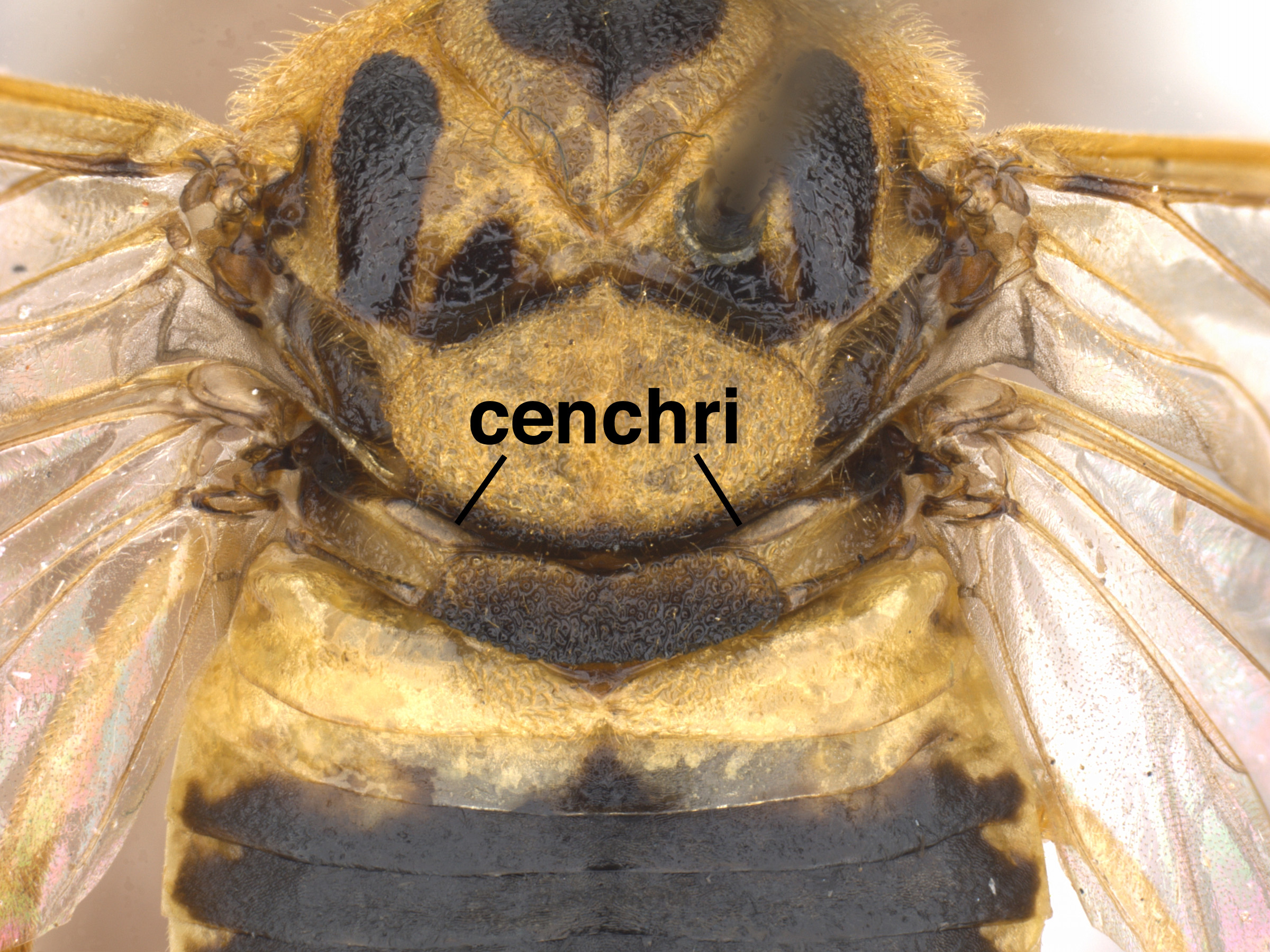 less than width of cenchruscenchrus:
less than width of cenchruscenchrus: (Smith 1992Smith 1992:
(Smith 1992Smith 1992: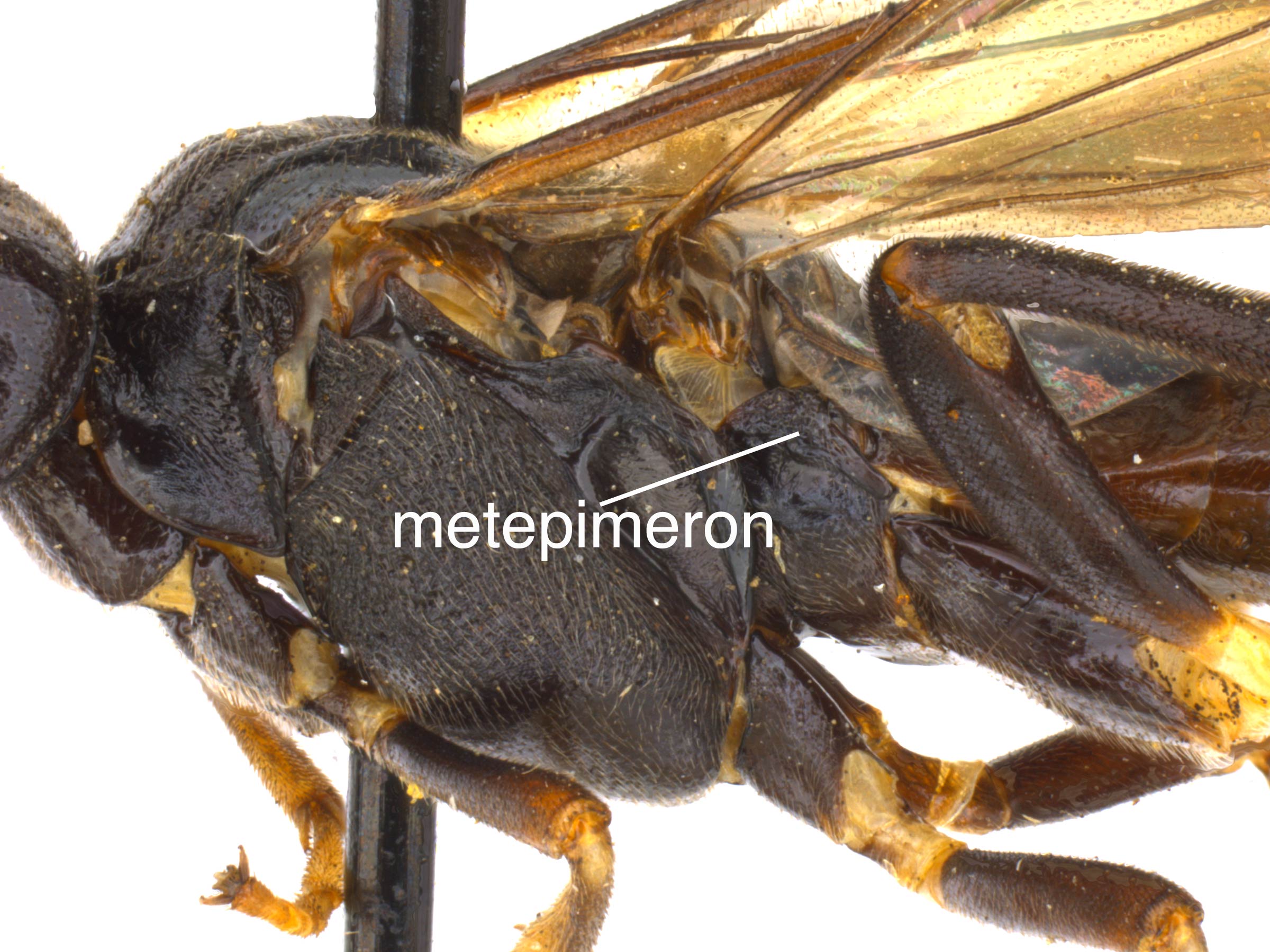 fused laterally with first tergitetergite:
fused laterally with first tergitetergite: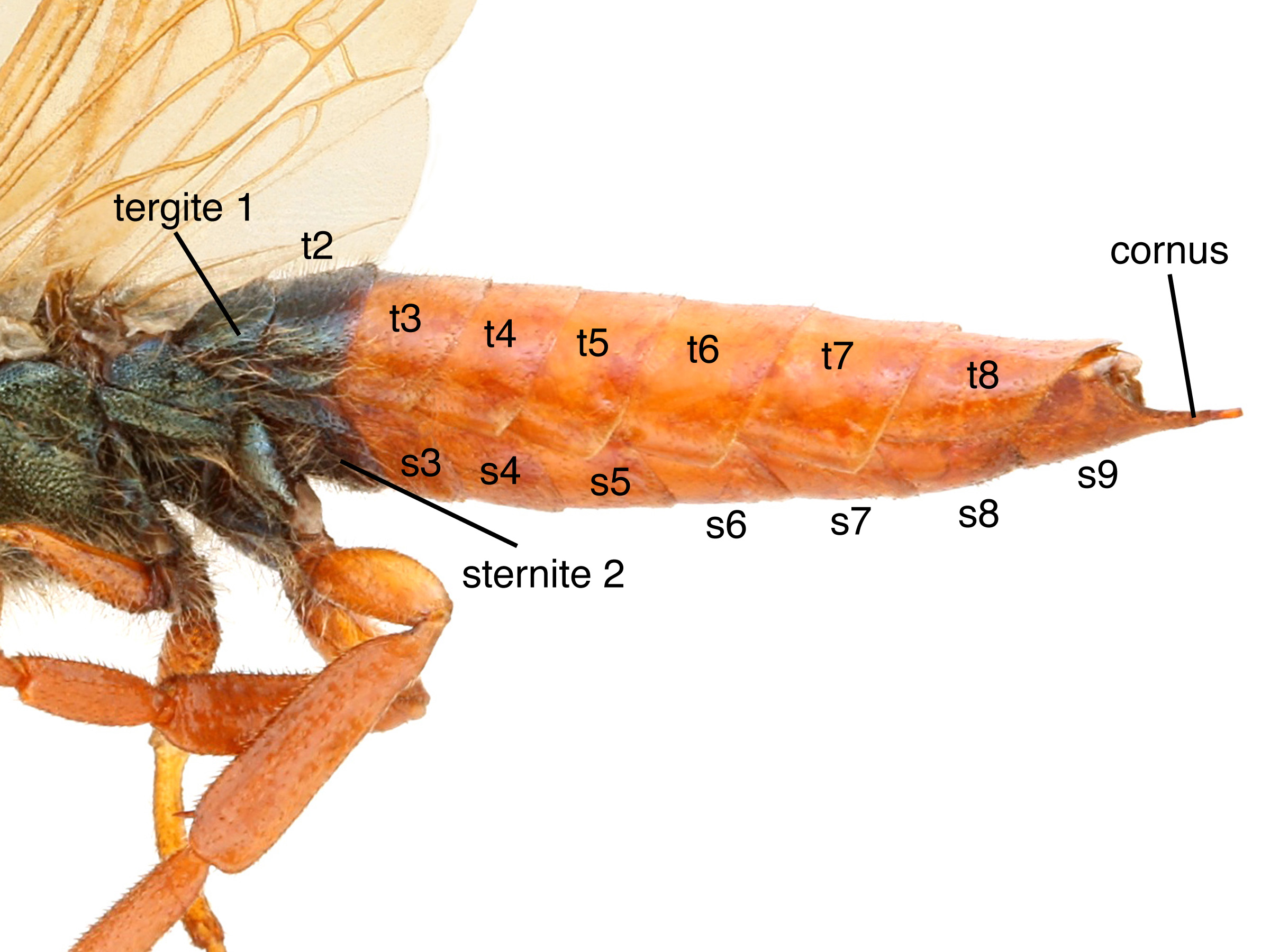 (Smith 1992Smith 1992:
(Smith 1992Smith 1992: without preapicalpreapical:
without preapicalpreapical: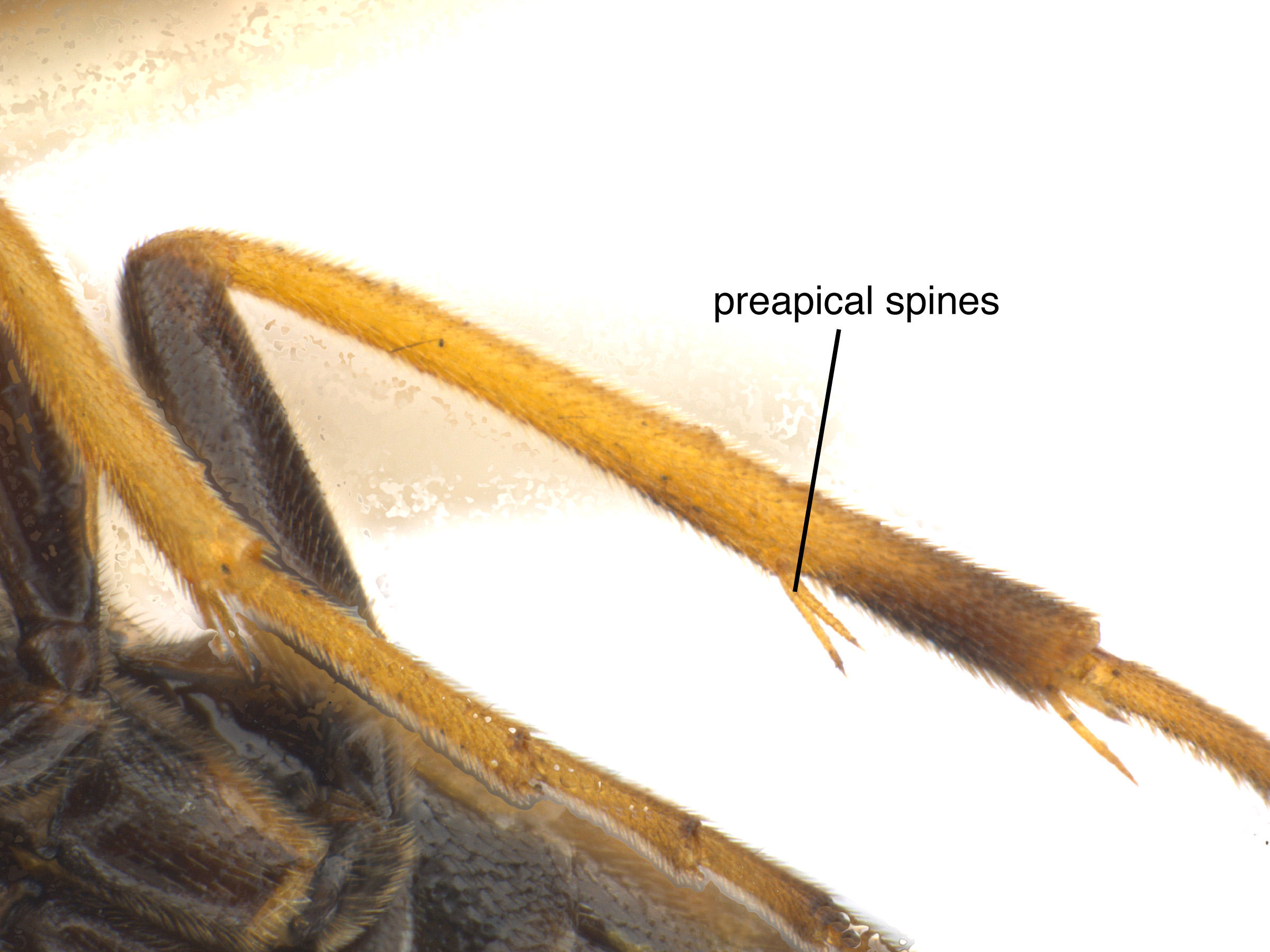 spurs (Smith 1992Smith 1992:
spurs (Smith 1992Smith 1992: R1 of hind winghind wing:
R1 of hind winghind wing: open at apexapex:
open at apexapex: with large lobe at basebase:
with large lobe at basebase: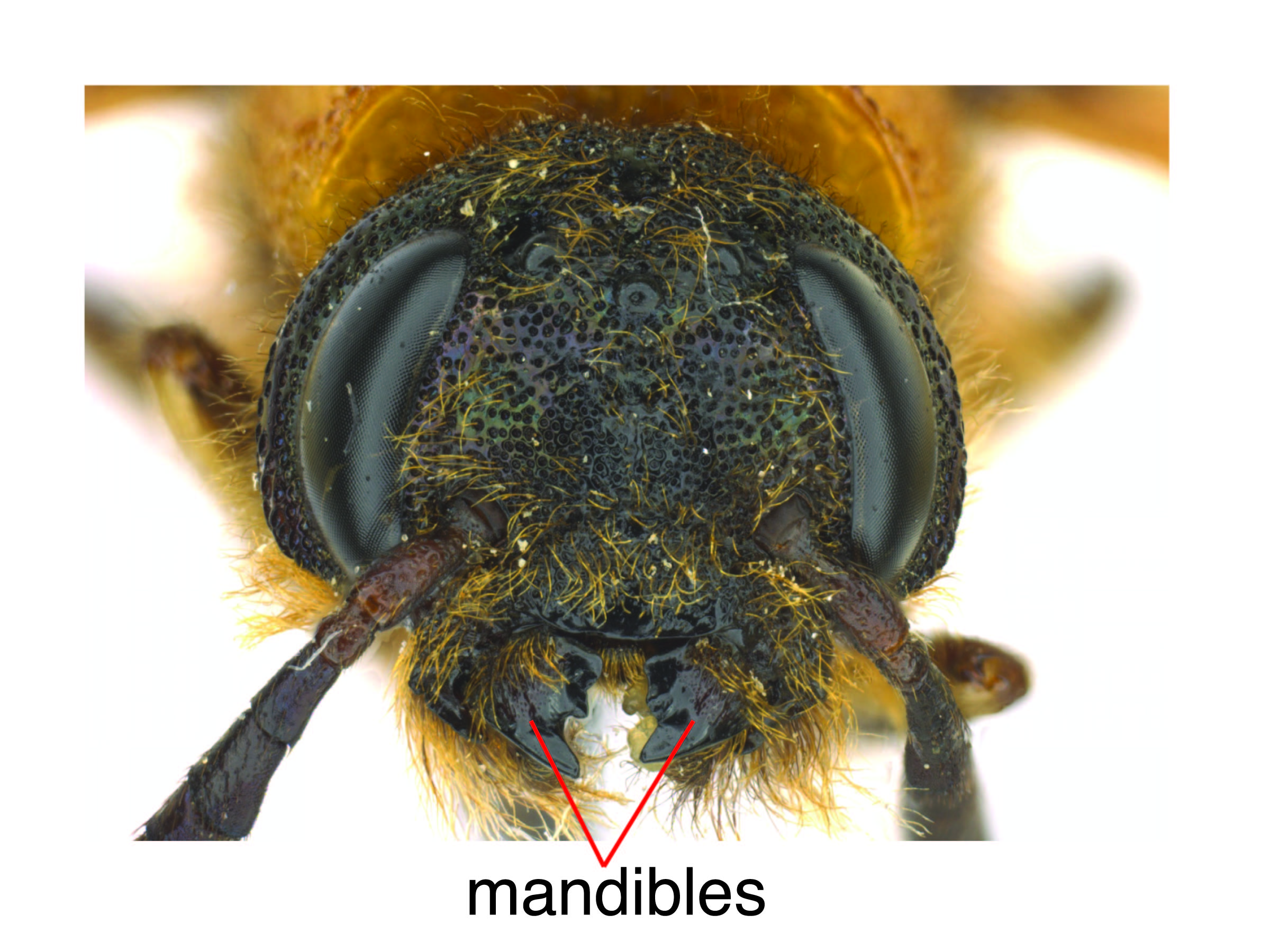 with 3 large teeth (Smith 1992Smith 1992:
with 3 large teeth (Smith 1992Smith 1992: with intercostal crossveincrossvein:
with intercostal crossveincrossvein: present in fore wingfore wing:
present in fore wingfore wing: (Smith 1992Smith 1992:
(Smith 1992Smith 1992:The family Argidae can be identified by the simple, single-segmented flagellumflagellum:
the third section of the antennae that includes all the segments beyond the pedicel; segments of the flagellum are known as flagellomeres
 of the antennaantenna:
of the antennaantenna:
the sensory organ emerging from the front of the head, usually between the compound eyes and above the clypeus; includes the flagellum, scape and pedicel
 . The genus Atomacera can be distinguished by the tarsal clawtarsal claw:
. The genus Atomacera can be distinguished by the tarsal clawtarsal claw:
sharpened appendage emerging from the apex of the tarsus
 and toothed mandiblemandible:
and toothed mandiblemandible:
the primary mouthpart used for biting and chewing; jaw
 . Arge and Atomacera males lack the distinctive forked flagellumflagellum:
. Arge and Atomacera males lack the distinctive forked flagellumflagellum:
the third section of the antennae that includes all the segments beyond the pedicel; segments of the flagellum are known as flagellomeres
 that other Argidae males possess (Goulet 1992Goulet 1992:
that other Argidae males possess (Goulet 1992Goulet 1992:
Goulet H. 1992. The genera and subgenera of the sawflies of Canada and Alaska: Hymenoptera. Symphyta. The insects and arachnids of Canada. Part 20. Agriculture Canada Publication.).
none
Larvae of Argidae are external leaf feeders on a large variety of plants. The only confirmed host records for Atomacera are for the two northernmost species: A. debilis feeds on species of Desmodium, with collections from Desmodium canadense (showy tick-trefoil) and Desmodium glutinosum (pointed leaf tick-trefoil). Atomacera decepta feeds on many species of ornamental Hibiscus (rosemallow). One specimen of A. pubicornis from Trinidad was associated with Ipomoea sp. (sweet potato, bindweed) (Smith 1992Smith 1992:
Smith DR. 1992. A synopsis of the sawflies (Hymenoptera: Symphyta) of America south of the United States: Argidae. Memoirs of the American Entomological Society 39: 1-201.).
Females oviposit into small “pockets” they cut into the upperside of the leaf. LarvaeLarva:
the immature stage of holometabolous insects
 feed gregariously in groups of 10–12 on the parenchymaparenchyma:
feed gregariously in groups of 10–12 on the parenchymaparenchyma:
in plants, the soft, thin-walled, inner tissue that performs functions such as photosynthesis, storage, and secretion; as opposed to dermal and vascular tissues
of the leaf from the underside, leaving the leaf looking translucent and skeletonized with only the cuticle and venationvenation:
the network of veins on a wing
intact. At maturity, they fall to the ground and spin cocoons in leaf litter underneath the plant (Lindquist and Trinnell 1965Lindquist and Trinnell 1965:
Lindquist OH and Trinnell JR. 1965. The trefoil sawfly, Atomacera debilis Say (Hymenoptera: Argidae), in Ontario. The Canadian Entomologist 97: 181-184., Tippins 1965Tippins 1965:
Tippins HH. 1965. The sawfly Atomacera decepta , a pest of Hibiscus . Journal of Economic Entomology 58 (1): 161-162. https://doi.org/10.1093/jee/58.1.161a). North American Atomacera are multivoltinemultivoltine:
describing a life cycle with many generations per calendar year
, with 2–6 generations per year (Tippins 1965Tippins 1965:
Tippins HH. 1965. The sawfly Atomacera decepta , a pest of Hibiscus . Journal of Economic Entomology 58 (1): 161-162. https://doi.org/10.1093/jee/58.1.161a).
World: This genus is restricted to the Americas, from eastern Canada and the United States, through the Caribbean and Central America, south to northern Argentina (Smith 1992Smith 1992:
Smith DR. 1992. A synopsis of the sawflies (Hymenoptera: Symphyta) of America south of the United States: Argidae. Memoirs of the American Entomological Society 39: 1-201.).
North America: Most Atomacera range from Panama north to the southern United States, with 2 species occurring farther north east of the Mississippi River and north into eastern Canada. One species, A. pubicornis, is recorded in Trinidad and Tobago in the Caribbean (Smith 1992Smith 1992:
Smith DR. 1992. A synopsis of the sawflies (Hymenoptera: Symphyta) of America south of the United States: Argidae. Memoirs of the American Entomological Society 39: 1-201.).
Map data from: GBIF.org (26 June 2019) GBIF Occurrence Download Atomacera
Details about data used for maps can be found here.